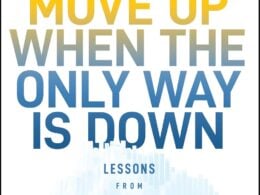The following is excerpted from “Subscribed: Why the Subscription Model Will Be Your Company’s Future—and What to Do About It” by Tien Tzuo with permission from Portfolio, an imprint of Penguin Publishing Group, a division of Penguin Random House LLC. Copyright © Tien Tzuo, 2018.
All you can fly
We all know what flying is like: awful. Even for frequent business fliers like me, getting into a plane seat is never a pleasant experience. Enter Surf Air. Former president and CEO, Jeff Potter, previously managed an airline and a vacation destination club, and he decided to combine both concepts. The result is Surf Air, which is often called the “Netflix of Aviation” or the “Uber of the Skies.” Its members get access to limitless flights for a flat monthly fee—right now they’re in the western United States and Europe, and growing rapidly.
This is another classic example of building a successful business by starting with the customer’s wants and needs, attacking pain points with a machete in order to surface the best outcome, and growing a loyal subscriber base in the process.
With Surf Air, you take out your phone, find out when the next few flights are leaving, and reserve a seat. As a member you’re prescreened, so you just walk onto the flight. For the people in my company who travel around the West Coast all the time, it’s been transformational. The airline industry has been ripe for disruption for decades, with customers demanding greater autonomy and control over their experiences. Air travelers are constantly being fleeced when they try to buy last-minute tickets—why should travel planning flexibility be penalized? And think about all the time we spend hanging around in airports—the inefficiencies of plane travel might be benefiting the airport retail industry, but most of us would just as soon spend that time somewhere else. There are 180 million frequent flyers worldwide, and as customer preferences shift, every one of them is up for grabs.
Eventually, the current airline industry strategy of shameless fee charging is going to collapse under its own weight. It’s the depressing result of a product mindset that prioritizes add-ons and revenue extraction and devalues customers. What could a flying experience look like in the future? Well, to start with, it might also include cars and trains. Maybe United sends you a cobranded Uber car with a monitor that includes all your hotel and flight details, and a drop-down menu to preselect all your entertainment and dining options, and light rail information for your destination city. That car’s arrival time at your house is synchronized to your flight’s actual departure time. Maybe you can start binge-watching “Narcos” in the car and pick it up on the plane where you left off. Maybe when you arrive at the airport, a service like Clear can speed you through security lines with a swipe of your boarding pass and a thumb scan, because all your standard ID information has already been paired with your biometric details. Maybe all these services could be wrapped up in a flat annual frequent flier membership plan.
“From a business perspective, we all know that airlines have struggled for years,” says Mac Kern, former vice president of commercial planning at Surf Air. “It’s a very capital intensive business, not to mention commodity-based. Prices get driven downward. It’s very competitive. The subscription model gives us predictive revenue—that’s something that no commercial carriers have. They don’t know if a flight is going to be profitable until the door on the airplane closes (and they still have to fly at that point!). Because of subscriptions, we know exactly how much revenue we’re going to generate at the beginning of every month. So we can scale our operation effectively, because we know exactly how much flying we’re able to execute. That kind of insight is basically magic in the aviation industry. No one has been able to do that before.”
Today, there are airline companies, telecoms, streaming music services, and newspaper publishers all asking the same kinds of questions: What’s the value of this new service (or route) to our subscriber base? Is it receiving the kind of support that we predicted it would? How long are our members staying with us? What does our growth efficiency look like? What do our usage patterns tell us about where to apply more resources? Who might be at risk of churning? Right now Surf Air costs around $2,000 a month, so it’s specifically aimed at frequent fliers with more money (or access to expense accounts), but we’re going to start seeing this model spread through the entire aviation industry in much the same way it’s transforming the automotive industry. It’s just a matter of time.
Free Digital Skills Training: From Pitch Decks to Measuring ROI
Railways and rideshares
Competition in the transportation industry has switched from vertical to horizontal. By that I mean it’s not just car companies going after car companies, or airlines taking on other airlines anymore. Light rails are competing against rideshares that are competing against budget airlines. Everyone is chasing after passengers who are demanding access to anytime, anywhere travel. Take SNCF, France’s state-owned railway company, which was founded in 1938. If you’ve ever gone backpacking in Europe, you’ve ridden SNCF. For lots of young French people working in cities, however, SNCF has been a reliable way to visit home on the weekends. But over the last couple of years, they’ve seen some fierce competition from new ridesharing services, long-route coaches, and discount airlines.
SNCF realized that it needed to compete against all these new transportation platforms to stay viable, so it decided to launch a new targeted subscription service: young adults between the ages of 16 and 27 got to ride anywhere they want, for 79 euros a month. Once it got the idea, it took eight months for SNCF to roll out the program. That’s ridiculously fast. Its old card-based loyalty programs used to take three weeks to complete. This one took five minutes. The results were staggering. Today 75,000 more young French people are taking the train. SNCF hit its annual growth targets within a couple of months.
“The model of unlimited subscription has become a reality in telecommunications, sports halls, and cinema,” says Rachel Picard, general manager of Voyages SNCF. “Young people want more freedom, they like to travel, but they decide on things late and tend not to book in advance for cheaper rates. So the idea was: Why don’t we use online subscriptions in order to adapt to these new modes of consumption and travel habits? Why not give them unlimited rides?” Why not? SNCF had a good idea based on behavioral data from its other monthly membership card programs, as well as the back-end systems to spin up a new subscription initiative quickly.
Think about it. This is an 80-year-old state-owned rail company competing against transportation startups like BlaBlaCar, a wildly successful French ridesharing platform that connects passengers with empty seats on long-distance car journeys, allowing passengers and drivers to share the cost of a trip. It did this by taking advantage of a cloud-based suite of solutions: Salesforce for CRM, Zuora for subscription management, SlimPay for payments, and AriadNEXT for document verification, among others. SNCF is yet another example of a big “incumbent” company reacting nimbly with the help of a few new software services. And since it was targeting a young audience, it also put lots of resources into social media monitoring and marketing. SNCF knew from the start that its customer service platforms were going to be Twitter and Facebook. The result was thousands of young people seeing their families and loved ones more often.
Trains, bike shares, subways, shuttles, and car services are all locked in horizontal competition, but smart partnerships and platforms will help commuters carry their identity across all these networks seamlessly and intuitively. The winners will be the services that don’t just manage routes, but solve for A to B. Helsinki is experimenting with a mobility planning app called Whim that generates instant itineraries that mix private and public transportation networks, and can even recommend healthier routes when the weather is nice. As “The Economist” notes, “Young urbanites, who have become accustomed to usership instead of ownership, find the notion of transport as a service both natural and appealing. Meanwhile the cost of running a car in a city goes ever upwards. Parking gets harder. Many city-dwellers are questioning whether the convenience is worth it. Between 1983 and 2014 the share of Americans aged 20 to 24 with a driving license fell from 92 percent to 77 percent.”
If there’s anything that these stories can tell us, it’s that transportation is rapidly evolving from a sequence of painful but necessary transactions toward an intuitive service that will eventually become seamlessly embedded in our daily lives. Even the whole idea of building specific industries around specific vehicles is being called into question. Car companies are buying bike and shuttle companies—who’s to say that an airline won’t be next? Meanwhile, airline executives are swapping notes with digital media experts around topics like churn, retention, and customer lifetime value. Train companies are moving beyond thinking about customer segmentation and into thinking about individual customers themselves. Things are becoming unstuck. It’s pretty exciting.
“Subscribed: Why the Subscription Model Will Be Your Company’s Future—and What to Do About It” by Tien Tzuo is available at fine booksellers.






